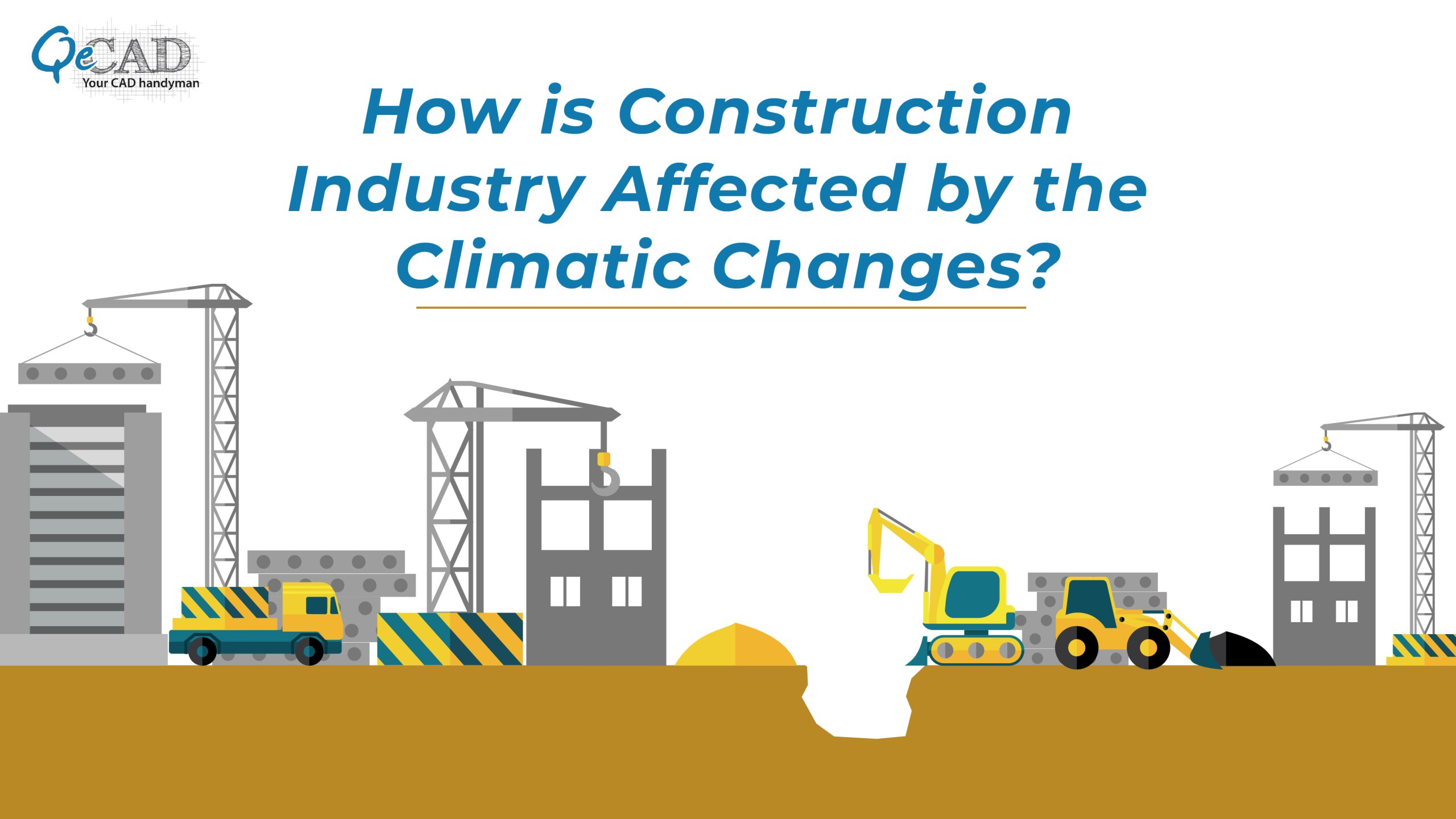
Climatic changes are affecting globally with the increase in hurricanes, flooding, storms, global warming, and so on, and this will increase in frequency and intensify at a faster pace. The drastic shift in climatic conditions has negatively impacted many industries, with the construction industry topping the chart. Climate change is raising many economic concerns in the construction industry, with rains, floods, and extreme heat damaging the existing buildings and work on ongoing construction sites. As stated by Dr. Sundukovskiy, “The estimated cost delays due to weather changes in the United States approaches around $4 billion.” This is just one country, and there are many countries like Europe and Australia and many projects disrupted by the intense weather conditions.
Let’s take a quick look at the climatic impact on the type of construction overall and how to overcome it.
1) Buildings: Be it residential or commercial, buildings are more prone to climatic changes. Any natural calamities can increase the risk of collapse, cracks, or other damages, shortening the life cycle of the building.
Build buildings to sustain climate changes
Building as per construction standards and codes eliminates the significant risk of damages and falls, even in extreme conditions. When adapting to building rules and regulations, potential issues prone to damaging the building in the near future are identified and resolved at the initial design stages with the help of Drafting Services.
Also, many AEC firms have started adopting alternative construction techniques and materials to mitigate the climatic impact. Many contractors are stepping towards sustainable construction initiatives, i.e., green buildings. These are more durable, sustainable, and environment-friendly.

2) Transport Infrastructures: Transport infrastructures like roads and rails can be most affected due to flooding, snow, downpour, storms, high wind speeds, etc. They can get damaged or can cause disconnection for a while in the case of electric railways. Also, the risk of rail erosion increases with an increase in groundwater level.
Design roads and railways structures to suit climatic changes
Upgrade the designing of roads and railways for the future. New roads must be designed and constructed considering all the potential disasters. Follow the current guidelines for planning, designing, creating, and managing the streets, so that surface water is redirected away from the roads and rail tracks to ensure the road’s durability and rail drainage systems.
3) Bridges, Subways, and Tunnels: Bridges, subways, and tunnels build ages before cannot sustain the adverse effect of the climate these days. This results in falls, damage, and cracks for most of them. Also, subways are prone to water clogging, and tunnels are prone to rising sea levels.
Build the structure to strengthen bridges and tunnels
Design infrastructure in sync with the climatic changes for performance and sustainability. This should include stressors to protect bridges from deteriorating in extreme situations.
Also, use Dykes for tunnels; it keeps the installations away from water impacts.
Follow the new codes of building infrastructures to bolster the climatic effect in the long run.
Listed above are a few risks that come with climate change, with a solution construction professional needs to follow. Everyone in the AEC industry needs to consider the drastic climatic affairs seriously and what level of damage they can cost to the already built and ongoing construction projects. Damages in terms of time, money, and workforce are for sure the major ones impacting the construction industry.
Conclusion
While constructing a project, extreme climatic conditions like a heatwave, wind speed, snowfall, landslides, etc., affect the building projects. Do consider the location as one of the essential factors before construction, as some regions are more prone to damage. Every construction projects have its weather risks and restrictions. It is advisable to evaluate everything beforehand. We at QeCAD provide you with accurate Drafting and Modelling Services with various iterations so that your construction plan can sustain a series of climatic changes.
